
NO&T IP Law Update
This article is also available in Japanese.
On May 26, 2023, the Grand Panel※1 of the Intellectual Property High Court (the “IPHC”) rendered their judgment in Dwango v. FC2, et al. (hereinafter, “Dwango II”),※2 a case that is notable in several respects (IPHC, Judgment of May 26, 2023, 2022 (Ne) 10046).※3 In Dwango II, Grand Panel addressed the unsettled issue of whether a Japanese patent is enforceable in respect of a system, the operation of which would infringe such Japanese patent, whose components are located partly in Japan and partly outside Japan. Furthermore, Dwango II attracted a great deal of attention because it was the first time that the IPHC called for third-party opinions through a proceeding for calling for third-party opinions which was introduced by an amendment of the Patent Act of Japan in 2021.※4 In Dwango II, the questions for which the court sought public opinions were as follows:※5
In Dwango II, the plaintiff Dwango Co., Ltd. (“Dwango”), a Japanese corporation, owns the Japanese Patent No. 6526304 (the “’304 patent”) titled “comment delivery system”. The defendant FC2, Inc. (“FC2”), a U.S. company, operates a business which provides online video-streaming-with-comments services (the “Services”). In its complaint, Dwango alleged that the systems (i.e., the network of servers and terminals, etc.) (the “Systems”) used in providing the Services fall within the technical scope of the invention claimed in claim 1 of the ’304 Patent (the “Invention 1”) and that of the invention claimed in claim 2 of the ’304 Patent (the “Invention 2”) (collectively, the “Inventions”). Dwango alleged that FC2’s act of transmitting files used for the Services (such files are hereinafter referred to as the “Files”) from a server located in the United States to user terminals in Japan constituted the act of “producing”※6 under Article 2(3)(i) of the Patent Act of Japan with respect to the Systems. Dwango also alleged that the defendant Homepage System, Inc. (“HPS”), a Japanese corporation, jointly performed the aforementioned act of transmission with FC2. On the basis of these allegations, Dwango sought an injunction preventing the transmission of the Files, as well as an award for compensatory damages.
In Dwango II, the key issue was whether the said transmission of the Files from the server located in the United States to user terminals in Japan conducted by FC2 falls under the act of “producing” a system covered by the Inventions, and thus constitutes infringement of the ’304 Patent.
With respect to this issue in relation to the principle of territoriality, Dwango II addressed the important issue of whether an infringement of a Japanese patent may be found to have occurred when a part of an act constituting the working of an invention of a network-type system is conducted outside Japan. In this newsletter, we explain the outline of the IPHC’s ruling and the reasoning leading to the Grand Panel’s judgment in Dwango II.
The first instance court of Dwango II (the Tokyo District Court) held that, in the case of an “invention of a product,” it may be found that the act of producing a patented product under the Patent Act of Japan occurs only when a product that meets all of the constituents of the patented invention is newly produced in Japan.※7
As for the Systems, since the server used for streaming videos and the one for streaming comments were both located in the United States, the Tokyo District Court pointed out that, among the components of the Systems, only user terminals were located in Japan, and the user terminals alone do not meet the above-mentioned “all of the constituents of the patented invention” condition. As a result, the Tokyo District Court did not find that the act of producing a patented product in Japan occurred.
The Grand Panel judgment in Dwango II※8 held as follows:
Based on the foregoing, the IPHC, pointing out the circumstances below, held that an act of producing the System 1 could be considered to have been conducted within the territory of Japan and thus constitutes the act of “producing” under Article 2(3)(i) of the Patent Act of Japan in relation to the Invention 1:
On July 20, 2022, the IPHC rendered its judgment in a patent infringement lawsuit between plaintiff Dwango and defendants FC2 and HPS in Dwango v. FC2, et al. (hereinafter, “Dwango I”).※9
The background of Dwango I is as follows. Dwango owns Japanese Patent No. 4734471 (the “’471 patent”) titled “display device, method of displaying comments, and program”, and Japanese Patent No. 4695583 titled “display device, method of displaying comments, and program”. Dwango alleged that the defendants’ programs at issue (the “Programs”) fell within the technical scope of the invention claimed in claim 9 of the ’471 patent (the “Invention 9”) and that of the invention claimed in claim 10 of the ’471 patent (the “Invention 10”). Dwango further alleged that the act of transmitting the Programs from a server located in the United States to a user in Japan performed by FC2 and HPS constituted the act of “providing through a telecommunication line”※10 under Article 2(3)(i) of the Patent Act of Japan with respect to the Programs. On the basis of these allegations, Dwango brought a suit against FC2 and HPS seeking an injunction preventing the transmission of the Programs, and an award for compensatory damages.
In Dwango I, the key issue was whether the said transmission of the Programs from the server located in the United States to a user in Japan performed by FC2 and HPS constitutes an act of “providing through a telecommunication line” under Article 2(3)(i) of the Patent Act of Japan and, consequently, would constitute an infringement of the ’471 patent.
Regarding the above-mentioned issue in relation to the principle of territoriality,※11 the IPHC held that in the case of an invention of a program that may be transmitted via a network, “an act of transmitting a program can be considered to constitute “providing” under the Patent Act of Japan when such transmission can be evaluated as having been performed within the territory of Japan from a substantive and overall perspective.” The IPHC also stated that, in such case, there is no violation of the principle of territoriality.
In determining whether an act of transmitting a program can be evaluated as having been performed within the territory of Japan, the IPHC stated that, among others, the following circumstances (a) – (d) should be taken into consideration:
In light of the said criteria, the IPHC made the following findings (A) to (D):
Based on the foregoing, the IPHC stated that it was reasonable to evaluate the Transmission as having been performed within the territory of Japan and held that the Transmission falls under the act of “providing” under Article 2(3)(i) of the Patent Act of Japan.
Dwango II is the first judgment by the IPHC clearly stating that, concerning an invention of a network-type system, the act of newly producing the network-type system constitutes the act of “producing” under Article 2(3)(i) of the Patent Act of Japan “if it is determined that such act is performed within the territory of Japan” taking into consideration all relevant circumstances. Prior to Dwango II, it was unclear whether the patentee of a Japanese patent could enforce its patent vis-à-vis a patent infringer, where the alleged infringement involves a newly developed network-type system whose components (e.g., a server) were partly located outside Japan. Dwango II clarified the possibility of enforcing a Japanese patent of an invention of a network-type system against those who commit the act of “producing” it under Article 2(3)(i) of the Patent Act of Japan across the border of Japan. In this regard, in Dwango I, the IPHC had already confirmed the possibility of enforcing a Japanese patent of an invention of a program that may be transmitted via a network vis-à-vis a patent infringer, where the alleged infringement involves transmission of a program, a part of which is performed outside Japan.※12
However, it should be noted there is a possibility that the Supreme Court of Japan may reach a different opinion from that of the IPHC.
On the other hand, neither Dwango II nor Dwango I addressed the issue of whether the views and criteria set out in these judgments apply beyond the particular acts subject to the patent infringement claims in such cases (i.e., the act of newly producing a system in the case where the rights of a patentee of an invention of a network-type system are asserted, and the act of providing a program through a telecommunication line in the case where the rights of a patentee of an invention of a program that may be transmitted via a network are asserted) to other inventions or other acts of working of an invention. Rather, in Dwango II, the IPHC focuses on the characteristics and features of network-type systems in their reasoning for adopting their view and criteria mentioned in III. above. Therefore, it is likely that the view and criteria set forth by the IPHC in Dwango II are limited in application to network-type inventions. It is important to monitor how the IPHC addresses similar patent infringement cases, particularly whether the IPHC will establish similar criteria to that set out in Dwango II or apply different criteria in cases involving other types of inventions or other acts of working when part of the acts are performed outside Japan.
As mentioned above, Dwango II clarified the possibility of enforcing a Japanese patent in cases where a part of the components (e.g., a server) of an infringing network-type system was located outside Japan. Therefore, patentees of inventions of a network-type system may consider the possibility of enforcing their Japanese patents against network-type systems in which part of the components, such as servers, are located outside Japan.
Moreover, Dwango II recognized the possibility that users of a network-type system for business may be at risk of infringing a Japanese patent if the components of that system are partly located in Japan (for example, if the user terminals are located in Japan). Thus, the possibility that use of a network-type system for business may infringe a Japanese patent should be considered by providers of such systems. In addition, if a company uses a network-type system to provide its services worldwide, and in Japan the enforceability of the rights of a patentee is recognized in respect of such system while in other jurisdictions enforceability of such patents is not recognized, the company should consider what measures should be taken to avoid patent infringement.
*1
At the IPHC, cases are heard by a panel of three judges; however, in cases that address a particularly important issue(s), a Grand Panel of five judges oversee the proceedings and render the judgment.
*2
Dwango II is the 15th “Grand Panel judgment” ever issued by the IPHC. A Grand Panel judgment is not a judgment relating to a single case; rather, several judgments/decisions relating to several cases addressing the same legal issues were rendered by the Grand Panel of the IPHC on the same day. By counting such group of judgments/decisions collectively as one Grand Panel judgment, Dwango II is recognized as the 15th Grand Panel judgment issued. Please note that, while Dwango II commenced in 2019, another patent infringement case involving the same parties had already started in 2016 (i.e., Dwango I, which is discussed below).
*3
As of June 12, 2023, the actual written Dwango II Grand Panel judgment has not been made available to the public and only a summary of the Judgment (currently only in Japanese) is available on the IPHC’s website. This newsletter is based on information provided in such summary of the judgment.
*4
In a proceeding for calling for third-party opinions, the court solicits written opinions from the general public regarding the application of relevant law (i.e., a provision of the Patent Act of Japan, etc.) to a particular set of facts. For information on Proceedings for Calling for Third-party Opinions, see the IPHC’s webpage at:
https://www.ip.courts.go.jp/eng/Guidelines_for_Proceedings/vcmsFolder_1618/vcms_1618.html.
*5
The questions were included in the “Guidelines on the Call for Opinions” published on the IPHC’s website, but the relevant webpage was removed from the IPHC’s website after the period for submission of third-party opinions expired.
*6
Article 2(3)(i) of the Patent Act of Japan sets forth the definition of “working” of an “invention of a product,” and pursuant to that definition, “producing” is included in “working.” An invention of a system is categorized as an “invention of a product.”
*7
Tokyo District Court, Judgment of March 24, 2022, 2019 (Wa) 25152.
*8
The summary of the Grand Panel judgment only discloses the ruling for one of the Systems (the “System 1”) which is the system relating to the Invention 1. However, the summary states that the ruling also applies to the other System which is the system relating to the Invention 2.
*9
IPHC, Judgment of July 20, 2022, 2018 (Ne) 10077.
*10
Pursuant to the definition of “working” set forth in Article 2(3)(i) of the Patent Act of Japan, in the case of an invention of a program, “providing through a telecommunication line” is included in “working.”
*11
The court of first instance (the Tokyo District Court) for Dwango I did not make any ruling addressing the principle of territoriality with respect to this particular case because the court found that the Programs did not fall within the technical scope of the Invention 9 or that of the Invention 10 (Tokyo District Court, Judgment of September 19, 2018, 2016 (Wa) 38565).
*12
There is a possibility that the Supreme Court of Japan may reach a different opinion from that of the IPHC.
This newsletter is given as general information for reference purposes only and therefore does not constitute our firm’s legal advice. Any opinion stated in this newsletter is a personal view of the author(s) and not our firm’s official view. For any specific matter or legal issue, please do not rely on this newsletter but make sure to consult a legal adviser. We would be delighted to answer your questions, if any.
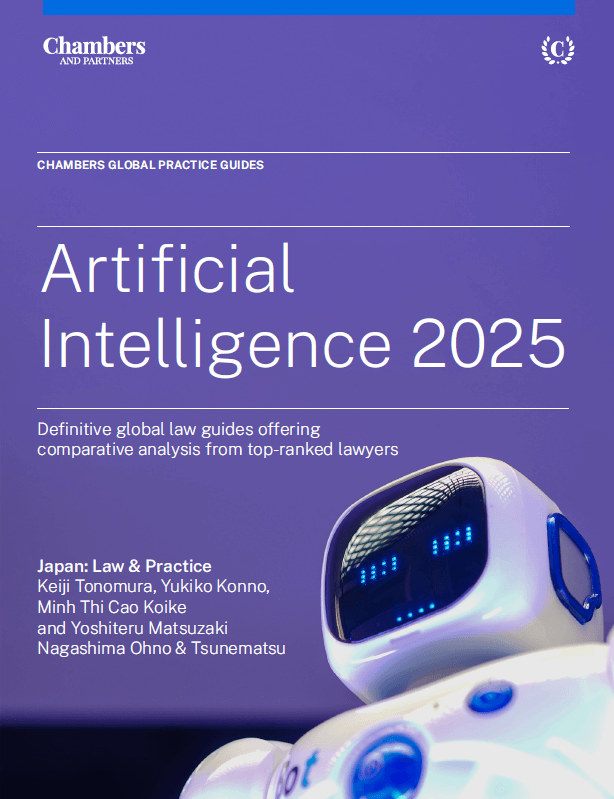

(June 2025)
Keiji Tonomura, Yukiko Konno, Minh Thi Cao Koike, Yoshiteru Matsuzaki (Co-author), Masahiro Kondo (Contributor)


Kenji Tosaki, Takahito Hirayama (Co-author)


Kenji Tosaki, Nozomi Kato (Co-author)


(April 2025)
Shiro Kato, Chihiro Shimaoka (Co-author)
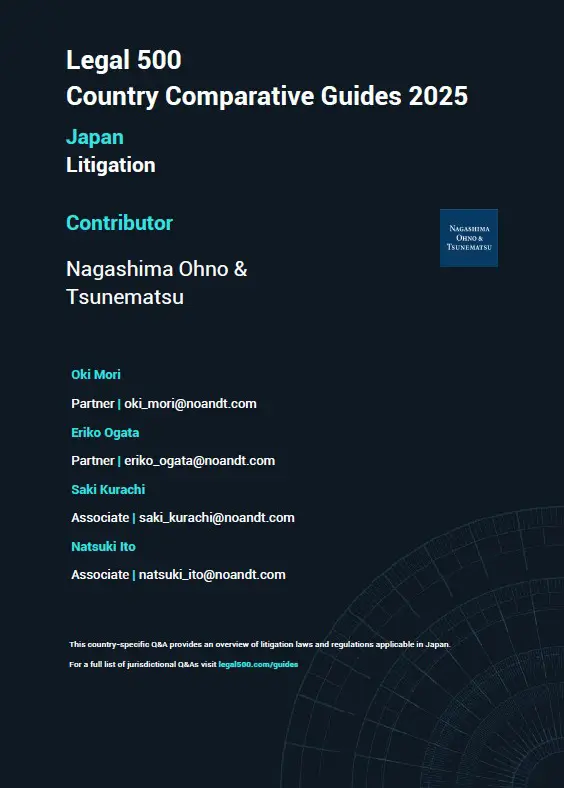

(July 2025)
Oki Mori, Eriko Ogata, Saki Kurachi, Natsuki Ito (Co-author)
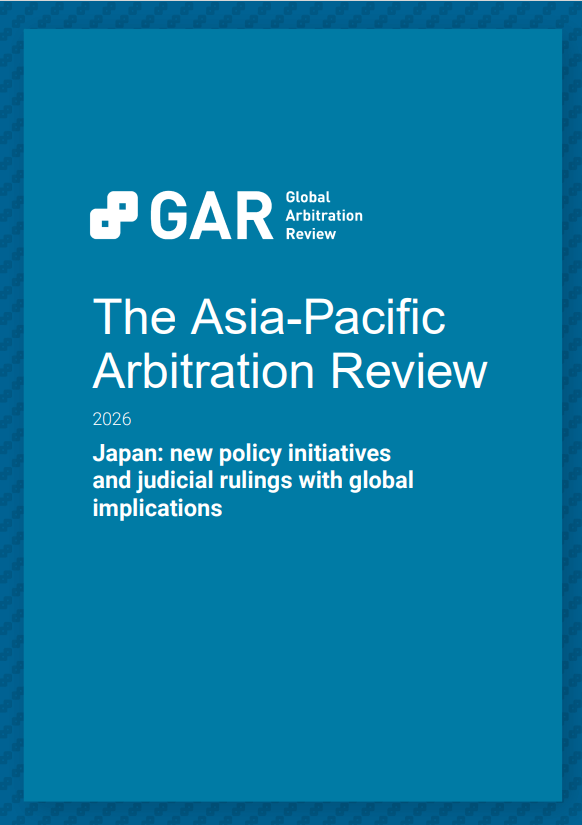

(May 2025)
Yoshimi Ohara, Shota Toda, Annia Hsu (Co-author)
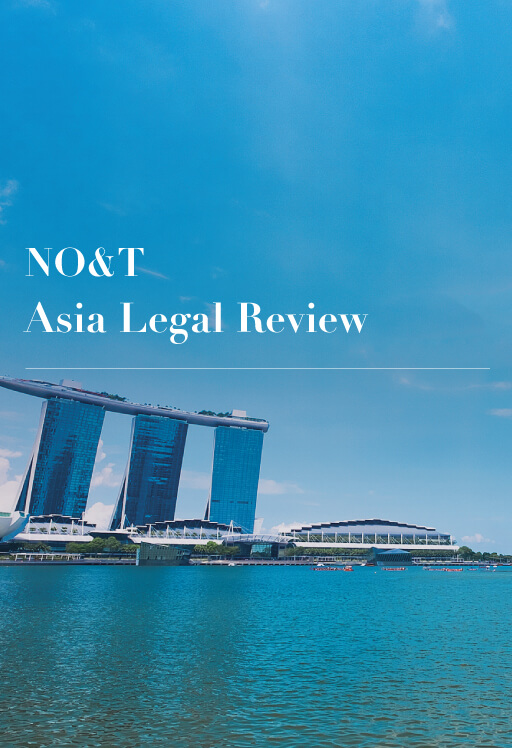

Patricia O. Ko
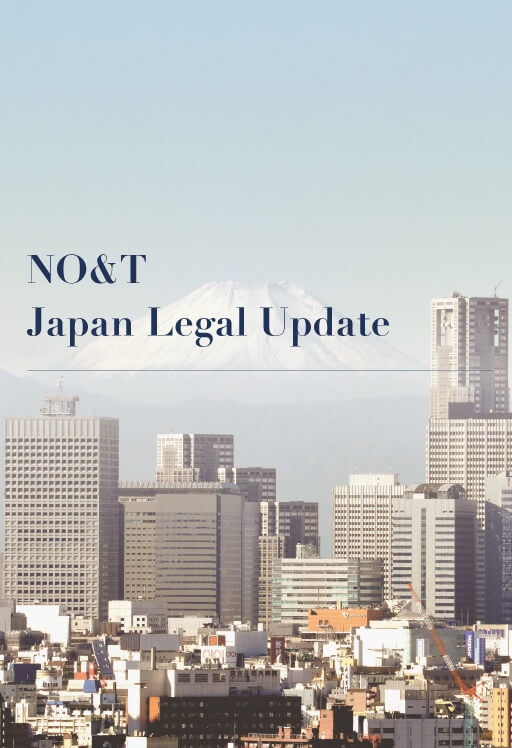

Hiroki Tajima


Kenji Tosaki, Takahito Hirayama (Co-author)


Kenji Tosaki, Nozomi Kato (Co-author)


Kenji Tosaki, Masato Kumeuchi, Soichiro Unami (Co-author)


Kenji Tosaki, Takahiro Hatori, Nozomi Kato (Co-author)